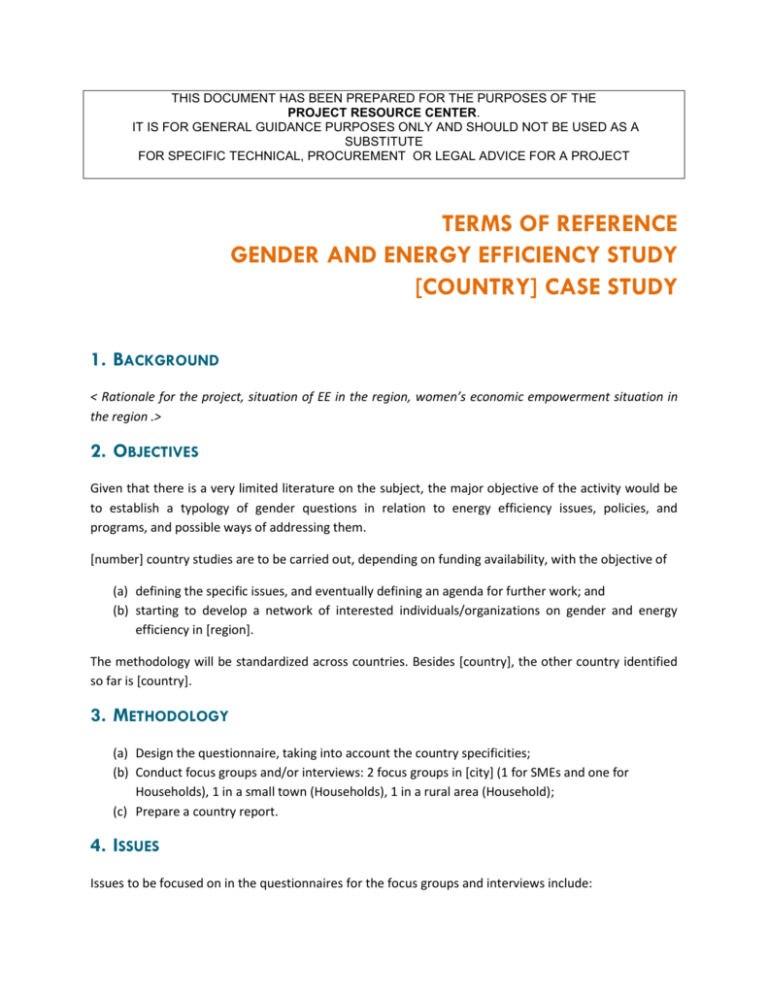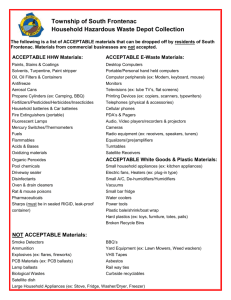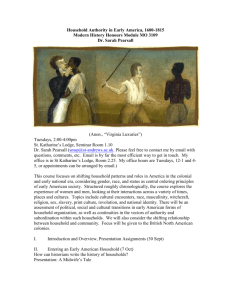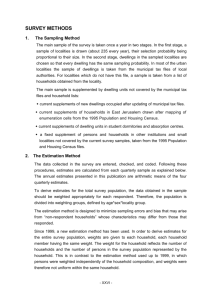ToR_Gender_and_Energy_Efficiency_Study
advertisement

THIS DOCUMENT HAS BEEN PREPARED FOR THE PURPOSES OF THE PROJECT RESOURCE CENTER. IT IS FOR GENERAL GUIDANCE PURPOSES ONLY AND SHOULD NOT BE USED AS A SUBSTITUTE FOR SPECIFIC TECHNICAL, PROCUREMENT OR LEGAL ADVICE FOR A PROJECT TERMS OF REFERENCE GENDER AND ENERGY EFFICIENCY STUDY [COUNTRY] CASE STUDY 1. BACKGROUND < Rationale for the project, situation of EE in the region, women’s economic empowerment situation in the region .> 2. OBJECTIVES Given that there is a very limited literature on the subject, the major objective of the activity would be to establish a typology of gender questions in relation to energy efficiency issues, policies, and programs, and possible ways of addressing them. [number] country studies are to be carried out, depending on funding availability, with the objective of (a) defining the specific issues, and eventually defining an agenda for further work; and (b) starting to develop a network of interested individuals/organizations on gender and energy efficiency in [region]. The methodology will be standardized across countries. Besides [country], the other country identified so far is [country]. 3. METHODOLOGY (a) Design the questionnaire, taking into account the country specificities; (b) Conduct focus groups and/or interviews: 2 focus groups in [city] (1 for SMEs and one for Households), 1 in a small town (Households), 1 in a rural area (Household); (c) Prepare a country report. 4. ISSUES Issues to be focused on in the questionnaires for the focus groups and interviews include: Household energy management (a) identify equity in decision-making on choice of energy solutions and household appliances; (b) women and men respective roles on efficient/rational use of energy resources and appliances in the household; (c) access to information, by gender, on energy efficiency options; (d) establish whether women and men have equal access to finance to undertake energy efficiency improvements. Pricing and subsidies (a) identify women and men’s respective perspectives on energy pricing and subsidies; (b) establish whether women and men are (or would be) equally or differentially affected by pricing reforms (by type of energy product or service); and (c) establish whether women and men head of households benefit equally from energy subsidies; (d) identify the specific gender considerations which should be taken into account in the design and delivery of social safety net measures linked to pricing reform/energy efficiency. Sector energy efficiency ’guidelines’ (a) Transport: how can women and men’s needs be taken into account in the development of energy efficient transport infrastructure and services (prioritization of urban public transport over private cars). How can their needs be taken into account when energy efficiency in transport becomes an objective of urban planning. (b) Building Design Regulation: are women and men’s needs/impacts on taken into account when designing energy efficient construction standards; (c) Agriculture and climate change: how would the promotion of energy efficiency in agriculture (e.g. pumping) affects women and men. (d) Where energy efficiency issues are raised by the increasing participation of women in the labour market (e.g. transportation, substitution of prepared foods and household appliances for domestic work). (e) How the interests of women and men should be taken into account in the design and implementation of programs to improve the energy efficiency of household appliances (e.g. promotion of compact fluorescent light bulbs, appliance standards and labeling). Sector planning and development (a) availability of skills (Education and Training) by gender for energy efficiency professions; (b) participation of women and men in energy efficiency businesses, constraints and opportunities (including access to finance); (c) participation of women and men in energy efficiency policymaking, planning and research; and, (d) monitoring the impact on women and men of energy efficiency policies and programs/projects. Information and Communication (a) Access to information on energy efficiency by gender; (b) Participation of women and men in design and delivery of information and communication strategies and products on energy efficiency.











